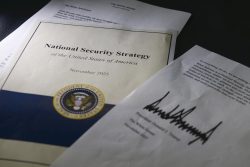15:06 JST, July 4, 2024
A system that values the lives of some people more than others is completely unacceptable. The central government should swiftly establish a system to provide relief to a wide range of victims.
In appeals for five lawsuits in which victims who were forced to undergo sterilization surgery under the now-defunct Eugenic Protection Law and others sought compensation from the government, the Grand Bench of the Supreme Court acknowledged that the law was unconstitutional and ruled that the government was liable for damages.
High court rulings, which ordered the government to pay up to ¥16.5 million in compensation, have all been finalized. The Supreme Court ruling noted that the law was “extremely contrary to the spirit of respect for a person’s dignity and individuality.”
The law, which took effect in 1948, allowed sterilization of disabled persons and others for the purpose of “preventing the birth of defective descendants.” Based on this law, 25,000 people were surgically sterilized. Some operations were performed without their consent.
It is deeply regrettable that such a discriminatory law was created after the end of World War II and remained in force until 1996. The Supreme Court’s ruling is no surprise.
The largest point of contention in the lawsuits was whether the statute of limitations under the Civil Code at that time, in which the right to seek compensation expired after 20 years from the date of an illegal act, would be applied.
Lawsuits over forced sterilization have been filed in 12 district and branch courts nationwide since 2018. By then, decades had already passed since the victims’ surgery. Because of this, some rulings of the district and high courts dismissed their claims on the grounds of the statute of limitations.
However, the Supreme Court said, “It would run extremely counter to the principles of justice and fairness and be totally unacceptable for the state to be exempted from liability for compensation because of the expiration of the statute of limitations.”
The victims were deeply injured physically and mentally by the surgery performed against their will and were unable to have children. The Supreme Court may have thought that the seriousness of the irreparable human rights violations should be emphasized and that all the victims should be given relief.
In 2019, the Diet passed a relief law that provides each victim with a lump sum of ¥3.2 million. However, the amount of compensation approved by the Supreme Court exceeded ¥10 million, leaving a large gap between the two figures.
The Supreme Court’s ruling will also affect lawsuits other than the five cases at hand. It is imperative for the government to create new relief measures and review the amount of compensation without waiting for the conclusion of other ongoing lawsuits.
Only slightly more than 1,000 people have so far been approved for the lump-sum payments. It is said that many victims are unaware that they have undergone the surgery.
As many years have passed since their surgery, the victims are ageing. It will not be easy for those with disabilities to go through the compensation procedures on their own.
The victims also want the government to accept responsibility and apologize to them. The government has a responsibility to take into account the wishes of the victims and provide generous support.
(From The Yomiuri Shimbun, July 4, 2024)
"Editorial & Columns" POPULAR ARTICLE
-

Artificial Intelligence Expands Possibilities for Foreign Language Learners
-

Build Intellectual, Physical Strength, As Well As Communicative Power / Japan Should Move from Beneficiary to Shaper of World Order
-

Global Economy in Turmoil: Prevent Free Trade System from Going Adrift / Risks to Financial Markets Must Be Heeded
-

Japan-China Strain Set to Persist as Beijing Officials Self-Interestedly Bash Tokyo; Takaichi Unlikely to Back Down
-

Elderly People Living Alone: What Should be Done to Ensure Living with Peace of Mind until the End?
JN ACCESS RANKING
-

Japan Govt Adopts Measures to Curb Mega Solar Power Plant Projects Amid Environmental Concerns
-

Core Inflation in Tokyo Slows in December but Stays above BOJ Target
-

Major Japan Firms’ Average Winter Bonus Tops ¥1 Mil.
-

Bank of Japan Considered U.S. Tariffs, Coming Shunto Wage Hike Talks in Its Decision to Raise Interest Rates
-

Tokyo Zoo Wolf Believed to Have Used Vegetation Growing on Wall to Climb, Escape; Animal Living Happily after Recapture




























